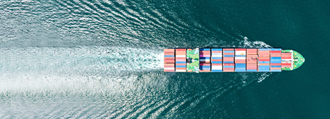On January 30, 2019[i], Thailand became the first Asian country to ratify the International Labor Organization’s (ILO) Working in Fishing Convention (C188). This comes after years of criticism over illegal, unreported and unregulated fishing (IUU) and findings of slavery and human trafficking within its fishing industry.
In this article we will discuss the most recent developments in international labor standards within the fishing industry and the ongoing concern for fishermen, migrants’ workers in seafood processing plants and employees of the aquaculture industry.
Troubles in the Thai fishing industry
The issues of IUU and labor abuse have long been reported in the fishing industry, however, 2014 was a pivotal year. Several well-established international news outlets, such as The Guardian,[ii] Reuters and The New York Times,[iii] pursued undercover investigations and brought slavery in the Thai fishing industry into the spotlight. The modern slavery investigations revealed that a significant number of men from Myanmar and Cambodia were tricked, trafficked and sold to the Thai seafood industry where they were forced to work in conditions akin to slavery. Following the exposés, the US Trafficking in Persons (Tipp) Report, which is the U.S. Government’s principal diplomatic tool to engage foreign governments on human trafficking, downgraded Thailand to the lowest rank alongside North Korea and Iran. The European Commission then dealt another blow to the Thai fishing industry by issuing an IUU “yellow card” warning to Thailand in 2015.
Human rights groups have continued to report on the situation and in August 2018, a joint statement signed by 30 human rights organizations urged the Royal Thai Government and the Ministry of Labor to ratify C188.[iv] The convention addresses working and living conditions on fishing vessels and access to medical care and social security.[v] Thailand will enter the convention officially on January 30, 2020 and by doing so joins 13 other countries including France, Norway and South Africa.
Thailand’s decision to ratify C188 is undeniably a positive step; however, human rights organizations have reiterated the importance of continued monitoring of the Thai fishing industry by the international community. This follows previous concern over the country’s efforts and sincerity in addressing its deep-rooted labor issues within the fishing industry.
Is the country adequately addressing slave labor?
Shortly after the TiP report downgrade and the EU issuance of a “yellow card” warning, Thailand pledged to reform its fishing industry in 2015. These efforts included the introduction of new fishing laws regulating wages and working conditions. Boat inspections were implemented on a newly created port-in, port-out (PIPO) system and all workers were required to carry legal documents which allowed them to check in and out of port. Following up on its pledge, the Royal Thai Government carried out labor inspections at PIPO centers on 25,467 fishing vessels, random inspection on 2,547 vessels and interviewed 474,334 fishery workers. In Trafficking in Persons Report 2015, the government stated that between May 6, 2015 and January 8, 2016, no cases of child labor or forced labor were found.[vi]
As a result of the government reforms, the U.S. upgraded Thailand’s TiP rating in 2016 and then again in 2018. In January 2019, the EU also announced that it was lifting the yellow card warning stating Thailand had “successfully addressed the shortcoming in its fisheries legal and administrative systems.”[vii]
Despite its efforts, some maintain that the Thai government reforms have not done enough to address forced labor in the country’s fishing industry. Human Rights Watch’s January 2018 report Hidden Chains includes interviews with 248 former and current workers, and concluded that labor violations continued in the Thai fishing industry. The report also criticized Thailand’s new prevention and protection frameworks for allowing cases of forced labor to go undetected. The UN’s International Labor Office also investigated Thailand for non-observance of the Forced Labor Convention, 1930 (No.29), which has been in effect in Thailand since 1969. The UN report flagged a weak legal framework regulating the employment of fishers and corruption among government officials and gang networks, as contributing to the severe human rights abuses suffered by migrant workers in the fishing industry[viii].
With an issue so highly influenced by political and criminal elements, and yet so easily hidden by the complexities of the fishing industry, stakeholders must remain realistic about the time it takes to resolve such an issue. Moreover, exploitative practices are a systemic issue in Thailand and not confined to its fishing industry. In 2017, the UN Office on Drugs and Crime reported that that four million migrants live in Thailand and many of them end up working in labor-intensive industries such as agriculture, construction, domestic work, and the sex industry.[ix]
The importance of managing supply chain risk
The global seafood industry was valued at a record USD 150 billion in 2017, supported by strong global demand. For companies selling seafood products, countries in Asia and other developing nations remain a popular choice for sourcing, processing and packaging, in a bid to keep value chain costs low. However, these cost savings come with the risk of international labor standards being violated in the supply chain and thus facing the regulatory, legal and reputational repercussions. Recent studies have found that consumer behavior is changing, and a significant number of seafood consumers want clear sustainability information on packaging and in-store[x]. There is a growing demand for ‘slave-free’ or ‘sustainably sourced’ food products and companies should adapt to capture this growing market of conscious consumers.
The companies caught up in the 2014 media investigations, which revealed they sourced from suppliers linked to seafood slavery, faced public scrutiny and litigation by both consumers and victims of the abuse. In 2016, migrant workers from Myanmar won USD 1.3mn in compensation from a Thai tuna firm for labor abuses at a processing plant, while seven Cambodian workers continue to pursue legal action against two Thai food firms. On the customer side, three Californian law firms fought for an injunction against Costco for selling prawns not labelled as sourced using slave labor. Costco was accused of misleading customers by stating in its supplier code of conduct that it prohibited human rights abuses. Although the case was dismissed in 2017, it illustrates how slavery in the supply chain can result in legal action and reputational fallout.
The geographical and legal complexities of the fishing world allow for violations at sea to go undetected easily, hidden behind a myriad of flags of convenience, non-registered vessels, disabled transponders, fishing where no nation’s jurisdiction reaches and transshipments. Considering the amount of value in the seafood industry, it is not surprising to see that the issue of forced labor is not unique to Thailand. Abuse of workers at sea has been reported on board vessels registered to American, British, Chinese, Indonesian and Taiwanese companies.[xi] [xii]
Exploitation in the seafood industry is not only out at sea, but also reportedly occurring in seafood processing plants[xiii] and throughout the aquaculture industry.[xiv] [xv] Aquaculture is the fastest growing food production sector in the past 20 years. A large proportion of the work force consists of migrant woman and children. China, India, Vietnam, Bangladesh and Egypt are the major aquaculture producing countries,[xvi] with China accounting for over 60% of production in 2014.
As food companies look to capitalize on the increasing demand for seafood products, the need to monitor and identify potential human rights abuses in the supply chain is ever more important. Growing demand combined with alarming depletion in the global fish stock is pushing fishermen further out to sea for extended periods of time and increasing the risk of illegal labor practices. Thailand’s ratification of the ILO Working in Fishing Convention set a high bar for the fishing industry, but the industry remains complex. To mitigate their exposure to human rights abuses, companies should carry out a high level of due diligence on sourcing wild caught seafood. Companies that shift towards farmed fish and continue to use seafood processing plants in Asia are also urged to closely monitor supply chain labor standards to reduce the risk of violation and thus avoid potential litigation risk or reputational damage.
Forced labor in the seafood supply chain is just one of the 10 ESG issues covered in our thematic research report 10 for 2019: Systemic Risks Loom Large.
[i] International Labour Organization
[v] International Labour Organization 2
[vi] The Royal Thai Government
[viii] International Labour Organization 3
[ix] United Nations Office on Drugs and Crime
[xv] Aquaculture is the rearing of aquatic animals or the cultivation of aquatic plants for food.
Recent Content
Six Best Practices Followed by Industries Leading the Low Carbon Transition
In this article, we take a closer look at the leading industries under the Morningstar Sustainalytics Low Carbon Transition Rating (LCTR) and examine the best practices that have allowed them to emerge as leaders in managing their climate risk.
Navigating the EU Regulation on Deforestation-Free Products: 5 Key EUDR Questions Answered About Company Readiness and Investor Risk
The EUDR comes into effect in December 2024, marking an important step in tackling deforestation. In this article, we answer five key questions who the EUDR applies to, how companies are meeting the requirements, and the risks non-compliance poses to both companies and investors




-5-key-questions-answered-about-company-readiness-and-investor-risk.tmb-thumbnl_rc.jpg?Culture=en&sfvrsn=ee2857a6_2)